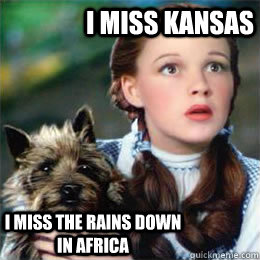
Posted on 04/26/2024 7:18:40 PM PDT by Jonty30
One of the driest growing seasons in decades has decimated crops and left millions hungry.
A prolonged dry spell in southern Africa in early 2024 scorched crops and threatened food security for millions of people. The drought has been fueled in large part by the ongoing El Niño, which shifted rainfall patterns during the growing season.
Impact on Rainfall and Agriculture From late January through mid-March, parts of Southern Africa received half or less of their typical rainfall, according to researchers at the Climate Hazards Center (CHC) at the University of California, Santa Barbara. February 2024 was especially dry. The map above shows the amount of rainfall during that month, as a percent of normal (from 1981-2024). The map is based on the Climate Hazards Center InfraRed Precipitation with Station data (CHIRPS).
Precipitation would normally be highest from December through February. But CHC researchers analyzing CHIRPS data found that February 2024 was the driest February in the 40-year data record for an area spanning much of Zambia, Zimbabwe, southeastern Angola, and northern Botswana.
The parched conditions came at a critical time when crops need ample water supply for growth and to produce grain. Insufficient rain and high temperatures resulted in crop failure in several countries. By the end of February, maize (corn) crops had withered and died on 1 million hectares in central and southern Zambia—almost half of the country’s maize-growing area.
The dry spell also affected livestock. Over 9,000 drought-related cattle deaths were reported in Zimbabwe, and over 1.4 million cattle are considered at high risk of drought conditions and death due to a lack of pasture and water.
When I was in high school 50 years ago, we heard nothing but stories of the massive drought and famine in Africa. Nothing has changed.
Paging Bob Geldof.....
The difference is that there are technological solutions that didn’t exist back then. Like desalination plants, for example.
Play stupid games, win stupid prizes.
Desalination takes 1) a functioning technocracy and 2) abundant, cheap energy. Neither exist in Africa.
South Africa was a functioning technocracy at one time, 30 years ago.

Gee whiz. They only have what, 1000 miles of coastline? No opportunity for desalination? Maybe they lack the energy capacity to run them.
They were once a nuclear power, thirty years ago,
Meanwhile, there are flash floods in other parts of the continent.
Actually until the last five or ten years.
A few of the other European colonies in Africa did well until abandoning them.
If only there were technologies for drilling water wells for irrigation needs.
/s
Apparently, they actually have lots of water, but it’s not allocated properly by the government.
Surprise!
Sounds like California,
“In South Africa, the government gives a free basic allowance of 6,000 litres per month to every household.”
Anyone see a problem here? /s
Umm, maybe Sam Kinison!
More migrants for us!
This is more broadly Southern Africa than South Africa:
“But CHC researchers analyzing CHIRPS data found that February 2024 was the driest February in the 40-year data record for an area spanning much of Zambia, Zimbabwe, southeastern Angola, and northern Botswana.”
Famine had all but been eradicated from earth thanks to US agritech. It’s one of the greatest accomplishments of modern man.
Crop yields are up between 800-1200% in 30yrs.
From drought resistant crops to simplistic devices employed to capture morning dew it is an incredible never heralded accomplishment.
It takes extreme conditions to flare up at this point.
Disclaimer: Opinions posted on Free Republic are those of the individual posters and do not necessarily represent the opinion of Free Republic or its management. All materials posted herein are protected by copyright law and the exemption for fair use of copyrighted works.